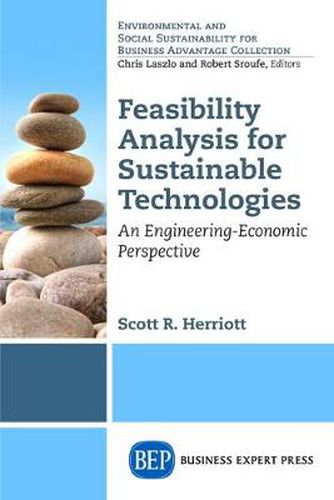Readings Newsletter
Become a Readings Member to make your shopping experience even easier.
Sign in or sign up for free!
You’re not far away from qualifying for FREE standard shipping within Australia
You’ve qualified for FREE standard shipping within Australia
The cart is loading…






This title is printed to order. This book may have been self-published. If so, we cannot guarantee the quality of the content. In the main most books will have gone through the editing process however some may not. We therefore suggest that you be aware of this before ordering this book. If in doubt check either the author or publisher’s details as we are unable to accept any returns unless they are faulty. Please contact us if you have any questions.
Sustainability is a hot topic now, attracting students to courses offered across a variety of academic departments, including business, environmental science, engineering, and city planning. A key aspect of implementing sustainability in organizations is the design and financial evaluation of systems for renewable energy, energy efficiency, and waste management. Most sustainability programs at the masters level have some expectation that the graduate will be able to do a feasibility study for such systems. However, no textbook exists to train the student to do a feasibility study–until now.
When my university decided in 2010 to make Sustainable Business the flagship specialization of our MBA program, I realized that we needed to have a course called ‘Sustainable Technologies,’ which would prepare students to conduct feasibility analyses. This course would take an ‘engineering-economic’ approach to the subject, teaching basic engineering concepts as appropriate for business students and using low-intermediate concepts in economics and finance that would still be accessible to students (both undergraduate and graduate) who do not have a background in science or economics. Teaching the course over the past few years, I also saw that this engineering-economic knowledge of sustainable technology also has value for students who want to manage sustainability initiatives or participate informatively in policy discussions on sustainable technology. Thus, the book should be able to sell into any masters-level program that emphasizes sustainability, and it will be a valuable resource for sustainability professionals who need to teach themselves how to do a feasibility study.
$9.00 standard shipping within Australia
FREE standard shipping within Australia for orders over $100.00
Express & International shipping calculated at checkout
This title is printed to order. This book may have been self-published. If so, we cannot guarantee the quality of the content. In the main most books will have gone through the editing process however some may not. We therefore suggest that you be aware of this before ordering this book. If in doubt check either the author or publisher’s details as we are unable to accept any returns unless they are faulty. Please contact us if you have any questions.
Sustainability is a hot topic now, attracting students to courses offered across a variety of academic departments, including business, environmental science, engineering, and city planning. A key aspect of implementing sustainability in organizations is the design and financial evaluation of systems for renewable energy, energy efficiency, and waste management. Most sustainability programs at the masters level have some expectation that the graduate will be able to do a feasibility study for such systems. However, no textbook exists to train the student to do a feasibility study–until now.
When my university decided in 2010 to make Sustainable Business the flagship specialization of our MBA program, I realized that we needed to have a course called ‘Sustainable Technologies,’ which would prepare students to conduct feasibility analyses. This course would take an ‘engineering-economic’ approach to the subject, teaching basic engineering concepts as appropriate for business students and using low-intermediate concepts in economics and finance that would still be accessible to students (both undergraduate and graduate) who do not have a background in science or economics. Teaching the course over the past few years, I also saw that this engineering-economic knowledge of sustainable technology also has value for students who want to manage sustainability initiatives or participate informatively in policy discussions on sustainable technology. Thus, the book should be able to sell into any masters-level program that emphasizes sustainability, and it will be a valuable resource for sustainability professionals who need to teach themselves how to do a feasibility study.